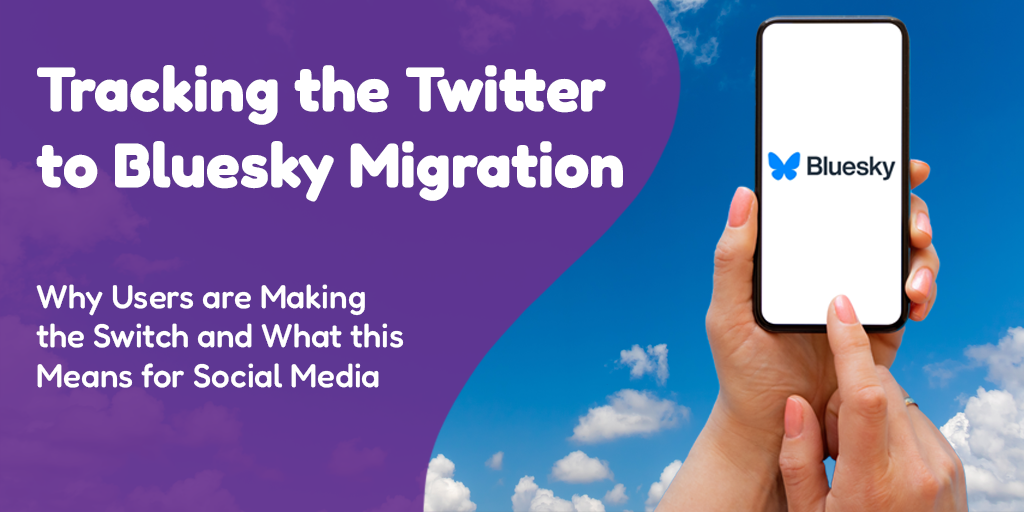 Posted by Allyson Grammo on June 22nd, 2020
Posted by Allyson Grammo on June 22nd, 2020#Hashtags. Some companies use them, some don’t. Ultimately, if you use the wrong ones, it’s true that your business won’t see much benefit from them. Yet, if you research your hashtags and treat them as the communities that they are, your social media following can grow and get the traffic it deserves. In these three steps, I’ll go over how to choose the right hashtags for your business and get more engagement on your content.
How to Research and Evaluate Hashtags

Knowing the difference between a hashtag that will grow your following and one that won’t is important when you’re looking to build engagement. With these three steps, I’ll take you through what to look for when considering a hashtag and its attached community. I’ll be using Instagram as an example of how to vet these hashtags, but you should do this process for each of the social media platforms that your business is featured on.
#1 Research similar content
It may seem obvious which hashtags to use when you post on social media, but it actually takes a bit of research to find the right ones. While you can use the general topic areas of your content as hashtags, doing this on its own isn’t very helpful because your content will likely get lost in a sea of similar posts. On the other hand, if you get too specific, that hashtag may not be used by others and your content might not be seen by anyone. Researching what others are using will get you the perfect hashtag for getting your content and your business noticed on social media.
Using hashtags is all about building on top of the communities that have already been established on social media. In order to find useful hashtags, take a look at what your competitors or popular content creators in your field are using. When doing this research, also try to think of what your customers will be looking for and what communities they might be interacting within, such as ones centered around locations, events, or hobbies. Once you find a hashtag that is relevant to your content, you’ll want to evaluate it to make sure it’ll benefit your business’s social media engagement.
#2 Evaluate the number of posts
Millions of content creators are posting using broad-termed hashtags, which is why it’s difficult to get any engagement when using them. For example, if you’re a graphic designer and you’re only using #marketing on your content, there are too many other people using that hashtag for your specific content to get noticed. Using general terms as keywords within your content is an excellent way to drive traffic, but when generalized topics are used as hashtags on their own, they simply aren’t useful. This is why it’s important to look at how many posts have been tagged with the hashtag you have in mind.
An ideal hashtag’s “size” will be within the range of 10k to 90k posts. With this number of posts, the hashtag’s associated community (those who use the hashtag as well as those who follow it on their feed) is not too big and not too small. You’ll want to find a few hashtags at opposite ends of that spectrum. The ones with fewer posts will have less competition, but will also have less traffic. The hashtags on the higher end of that target range will have much higher engagement, but will also have much more competition. If you use multiple hashtags within this post range, your content will be featured within a combination of low competition and high competition communities and will give you the greatest probability of getting engagement on your post.
#3 Keep it up to date
When examining if a hashtag is right for your content, you will also want to see if other content creators have posted using it recently. Sometimes hashtags that have a good number of posts could become dormant or are just no longer used. You’ll want to make sure this is not the case. This is helpful for getting content engagement because a trending hashtag of moderate size will often be followed by users, which allows them to see your content and learn about your business soon after you post.
When you look up a hashtag, Instagram automatically brings you to its top posts, which isn’t a good representation of whether or not that hashtag is still being currently used. You’ll want to go to the new posts tab, where you can take a look at the most recent content. If the most recent post was published within the past few days, that should be a good indicator that the community is active and ready to engage with your content.
New hashtags can also become trending as the interests or needs of your audience changes. Hashtags that are trending at one point can also go dormant, so it’s important to research and check on them regularly. Researching the hashtags you use and looking for new ones on a monthly or even weekly basis is a good habit to hold. Vary your use of hashtags and research new communities often.
Community and Engagement

The Dos and Don’ts
When you’re using hashtags, there are a few things that you have to keep in mind. If you use hashtags incorrectly or excessively, your post or account could be shadowbanned. If you aren’t familiar with the term, when an account is shadowbanned, it is limited on certain actions it can perform or participate in. An example of shadowbanning is being able to post, but no one being able to see that post except for you. Social media platforms can shadowban an account if it excessively uses the same hashtags or if it uses a hashtag that is irrelevant or is meant for a different kind of content. In order to prevent shadowbanning, make sure to vary which hashtags you use for each post and to only use hashtags that are relevant to your content.
It is also important to be tactful when using hashtags. Although your content could be relevant enough to tag a certain hashtag, it may not always be appropriate. Hashtags that are meant to amplify other voices, such as those used for social movements or activism, are not a place for businesses. Being mindful about the community surrounding a hashtag is key here, and this can be accomplished by doing thorough and thoughtful research.
Engaging with your audience
Once you have a good list of hashtags that you can use, don’t just use them as tags on your posts, but also interact with members within those communities. As stated before, your customers will often be following these hashtags. Use that to your advantage and engage with them. Instagram works best with you in it!
Remember, social media is all about social interaction. Your audience doesn’t just want to follow these hashtags – they also want to be heard! If you engage within these hashtags as well as with those who have liked and commented on your content, you’ll build a community of loyal followers. Engagement is a key aspect of growing your business on social media!
If you’d like some help engaging with your audience or creating content that will help your business grow, take a look at the digital marketing services we provide and feel free to contact us for more information.




